The push-up has long been an exercise that many use to measure their fitness. Even the U.S. military uses this move as a part of the PT testing service members engage in during training. So why is this move so essential and how can you improve it?
The push-up, like other pushing movements, is part of five functional movement patterns that the ACE Integrated Training Model includes as a way to improve overall health and fitness. Other essential movement patterns include the bend and lift, single-leg movements, pull and rotation. When you are able to effectively move something away from your body with the strength of your arms, you are better able to perform other activities of daily living such as closing a door, putting groceries away, doing yard work, and playing with your children or grandchildren.
The major muscles involved in most pushing movements include the pectorals major and minor, anterior deltoids and triceps muscles. There are several other synergistic muscles (helpers) that are also a part of improving your ability to function efficiently on a daily basis. These include the medial deltoids, latissimus dorsi, and serratus anterior and rectus abdominis/obliques. When all these muscle function well together, you are better able to perform your regular, daily activities.
Keys to Good Form
When performing a proper push-up, it is important to “pack the shoulders” by setting the shoulder blades (scapula) in the correct and most powerful position. This ensures that the right muscles are doing the work. Before beginning a push-up, maintain straight arms and pull the shoulder blades down the back and together (as if putting the scapula in your back pocket while pinching them together). Maintain this position of the shoulder blades as you complete your push-up.
As with many body-weight exercises, mastering the push-up takes time, but it’s definitely worth the effort. Here are a few moves to help improve the traditional push-up. Perform each of these four exercises as a part of your strength-training routine. To improve overall strength, perform two to four sets of eight to 12 repetitions of each exercise, using a weight that only allows you to complete your goal repetitions and sets safely.
Assisted Push-up
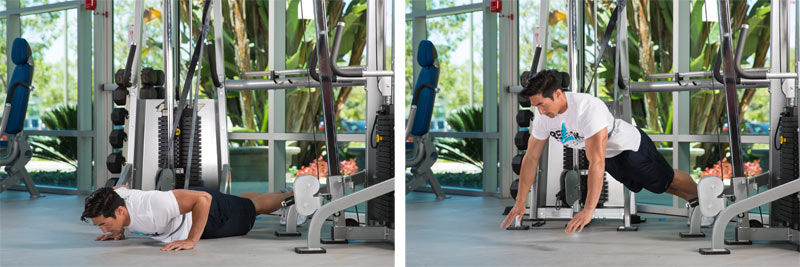
Loop one end of a super band around the top of a pull-up bar. Loop the other end around your trunk, just below your chest. Lean forward with a straight body and allow your body weight to take you toward the ground. When your hands meet the ground, push up quickly while maintaining a rigid body from head to feet. To increase or decrease the difficulty of this move, use a different band, or move your feet closer or farther away from the anchor point.
Pushing quickly off the ground helps develop power while moving the body through a full range of motion in the push-up position.
Off-set Single-arm Chest Press
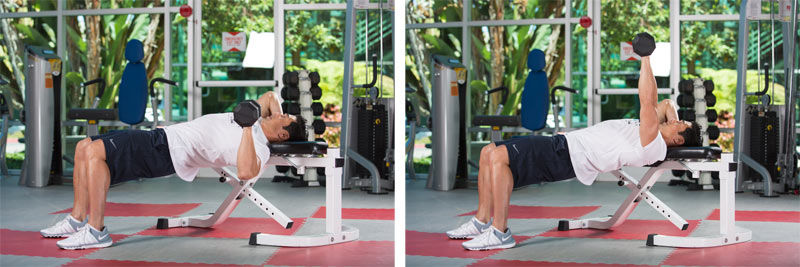
Lie on a bench and walk the hips off the side so your body is at a 45-degree angle and only one shoulder and your head is resting on the bench. Grasp the bench with the hand on the bench over your head. With your free hand, reach down for a dumbbell that you’ve placed next to the bench. Raise your hips up to a table-top position and press the dumbbell over your chest with the arm extended. Maintain this hip and trunk position as you lower the dumbbell to chest level with the elbow bent to the side of the body.
Many people have imbalances that may need to be addressed to help improve overall strength. This move improves upper-body strength as well as trunk stability, one side at a time.
Plank Reaches
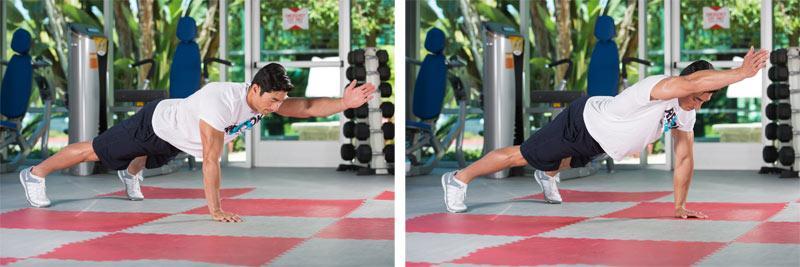
Assume a plank position with hands under the shoulders and feet set wide to maintain trunk position. Reach one hand out straight in front of the body, and then switch hands slowly while maintaining a rigid body from head to feet. You can increase the intensity of this move by holding light dumb bells and reaching the arm forward while holding the additional weight.
By improving full-body stability with this move, the trunk and shoulders are better prepared to take on the movement pattern of the push-up.
Swimmer Pulls
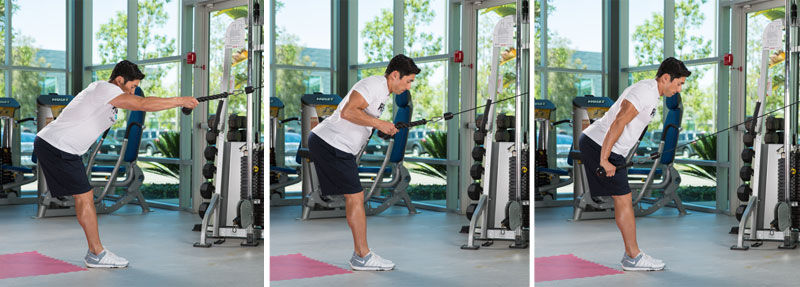
With a cable machine and rope attachment, position the anchor point at belly-button height. Step back while holding the rope ends and hinge at the hips. Begin with the arms extended. Pull the hands apart, bringing the rope toward the body under the chest. When your elbows can’t bend any further, extend the rope handles toward the hips, pressing the hands backward.
This move improves strength in the back muscles and triceps, which is essential for improving stability and performance in the push-up.
 by
by 


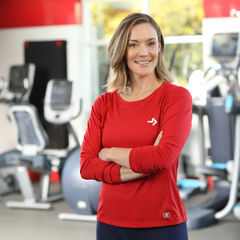






 by
by